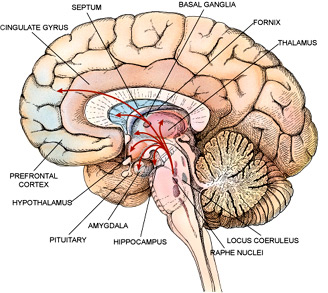There have been cases where traumatic brain injury lawyer has seen severe symptoms develop after a TBI accident. It is not uncommon for those stricken with traumatic brain injury (TBI) to the left side of the balance and vision problems. The process of maintaining balance involves input not only from the visual system, but also from the balance organs of the inner ear, and joint and muscle receptors. If head injury patients complained double vision, headaches, blurry vision, or dizziness, or if you have trouble concentrating, easily loses his place while reading, can not find početkomsljedeći line when reading, or trouble understanding or retaining what he read, he May have Post trauma Vision Syndrome (PTVS). Other symptoms include low rates of blinking (staring behavior), and spatial orientation.
Often, patients with PTVS also have what is called Visual middle Shift Syndrome (VMSS). Accurate processing of visual information requires precise sense in which a person's body is in space relative to its surroundings. Those with the correct perception of the middle of know where the center of their body, a posture and a sense of balance reflects this.
In VMSS, a person's perception of their own environment shifts. May walls seem to rely on it in, and his horizons tend to bend to the right or left. This syndrome may cause dizziness or nausea, spatial disorientation and poor posture or balance as a person unconsciously tilted to one side or the other to adjust to their perceptions of the middle or the horizon nagib.Osoba VMSS may bump into objects when walking or consistently remain one side of the hallway or room. May shift their position or distribution of weight on the balls of your feet to compensate for the perceived tilt on the horizon or walls.
After a comprehensive evaluation, doctors often can rehabilitate people with VMSS prescribing "yoked-prism" glasses, the shift of the perceived environment and counter the effects VMSS.
Most people are familiar with the optical effects produced by prisms. Prism lenses change the direction of light, rather than expanding or condensing the normal lenses do. Yoked prism redirection uses the prism lenses of equal power with the prism bases aligned in the same direction. Prisms are placed in the patient's sight and rotate until the patient a feeling of space and orientation is promijenjen.Položaj object seen through the prism will appear shift to thinner part, or top, the prism, which enables the brain to compensate for VMSS and suppression of visual disturbances caused by injury mozga.Pacijent restores the ability to accurately judge where an object in space in relation to themselves. In addition, physical and occupation therapy, in combination with the use of yoked prisms may be greater potential to continue faster.

{ 0 comments... read them below or add one }
Post a Comment